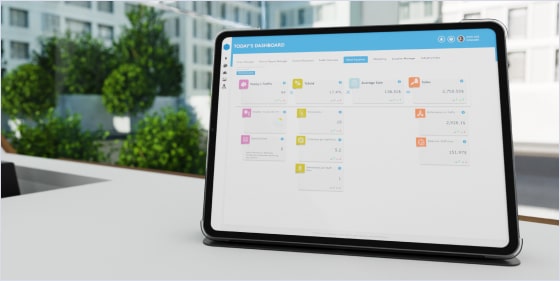
Optimizing Space Utilization Through People Counting Technology
Efficient space utilization is foundational for enhancing productivity, reducing operational costs, and improving user experience, whether in offices, retail stores, or public spaces. Yet, understanding how a space is used in real-time can be challenging without the right tools. This is where People Counter technology comes into play. By providing accurate, actionable insights, this technology is helping businesses and organizations unlock the full potential of their spaces.
What is People Counting Technology?
People counting technology refers to systems or devices engineered to track and analyze the flow of individuals in a specific area. These systems often utilize advanced methods such as sensors, cameras, and artificial intelligence to provide real-time data on foot traffic patterns, occupancy levels, and peak usage times.
This data isn’t just about tallying numbers; it transforms raw statistics into actionable insights, helping businesses make informed decisions about how to allocate and optimize their resources effectively.
Why Space Utilization Matters
Optimal space utilization isn’t simply about cramming as many people into a space as possible—it’s about efficiency, comfort, and functionality. Underused or overcrowded areas can lead to inefficiencies, higher costs, and dissatisfied occupants.
For example, in an office setting, unutilized meeting rooms not only waste valuable real estate but also inflate expenses like lighting, heating, and maintenance. On the other hand, overcrowded spaces can impact employee morale and productivity. Similarly, in retail, understanding customer traffic can directly influence store layout or staffing decisions, improving overall sales and customer experience.
How People Counting Technology Optimizes Space Utilization
1. Accurate Occupancy Tracking
Real-time people counting systems provide instant updates on the current occupancy of any space. This not only ensures compliance with safety and regulatory requirements but also helps identify underutilized spaces that can be repurposed.
For instance, in co-working environments, people counting technology enables businesses to monitor which desks, meeting rooms, or common areas are actively being used. Spaces that remain unoccupied can be restructured or allocated for other functions.
2. Identifying Peak and Off-Peak Hours
Understanding traffic flow is crucial, especially in commercial or public spaces. People counting systems can reveal peak times when spaces are the busiest and off-peak hours when usage declines. This knowledge empowers decision-makers to optimize schedules, staffing, and even energy usage.
For example, during quieter hours, lighting and HVAC systems could be reduced automatically, cutting costs while maintaining sustainability goals.
3. Enhancing Layout and Design
Data captured by people counting technology helps reveal how individuals move through a space. This insight can inform interior design and layout adjustments that deliver better workflows, reduce bottlenecks, or improve customer navigation in retail environments.
For offices, this might mean redesigning breakout areas to match higher demand or modifying meeting room spaces to accommodate group sizes effectively.
4. Data-Driven Decision Making
Traditional methods of measuring space utilization often rely on manual observations or one-off studies that may not reflect real-world dynamics. People counting technology provides continuous, reliable data. This data eliminates guesswork and supports proactive decision-making aligned with long-term strategies.
For instance, organizations can analyze year-long data to better plan for seasonal surges, facility expansions, or even downsizing based on actual usage patterns.
People Counting is a Step Towards Smarter Spaces
By leveraging people counting technology, businesses gain more than just data—they gain a blueprint for smarter, more efficient spaces. Whether you’re managing an office building, optimizing retail operations, or enhancing public spaces, this technology provides clarity on how spaces are used and what adjustments can maximize their potential.
The key to optimizing space utilization lies in the ability to measure it accurately. By adopting People Counter technology, you empower your organization to create environments that are not only cost-effective but also responsive to the needs of their users.